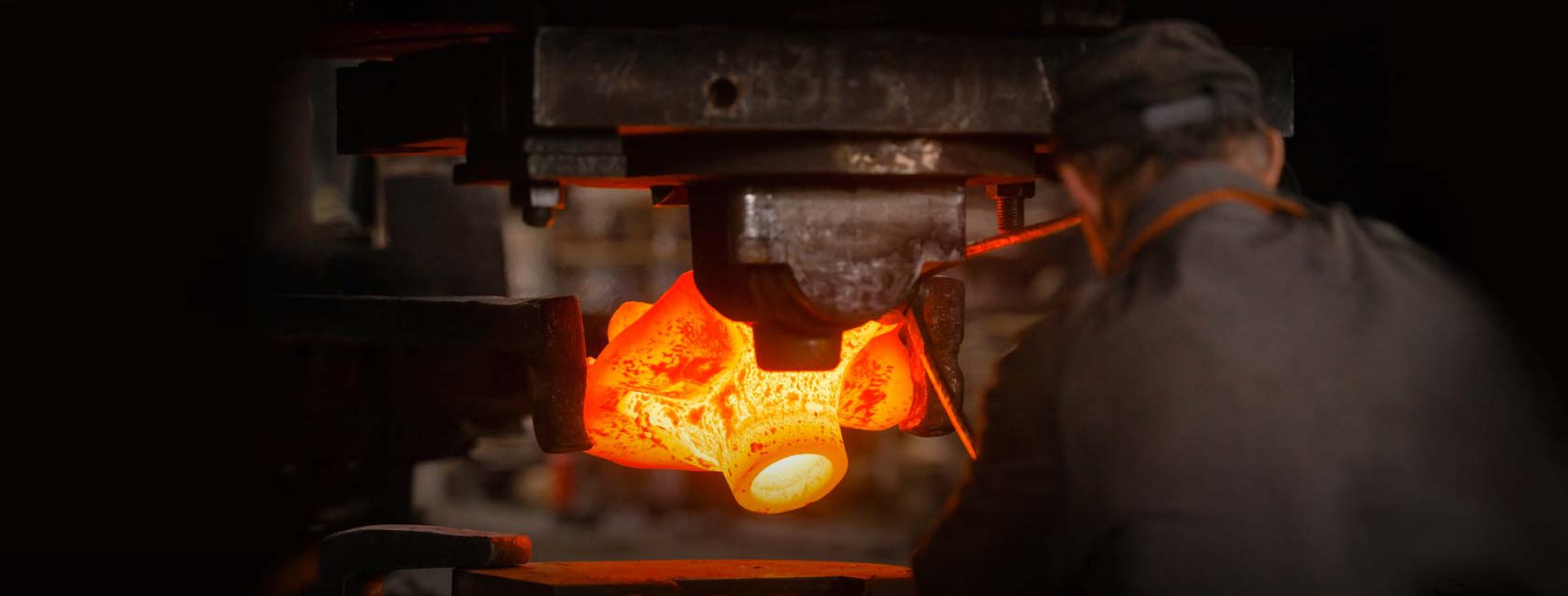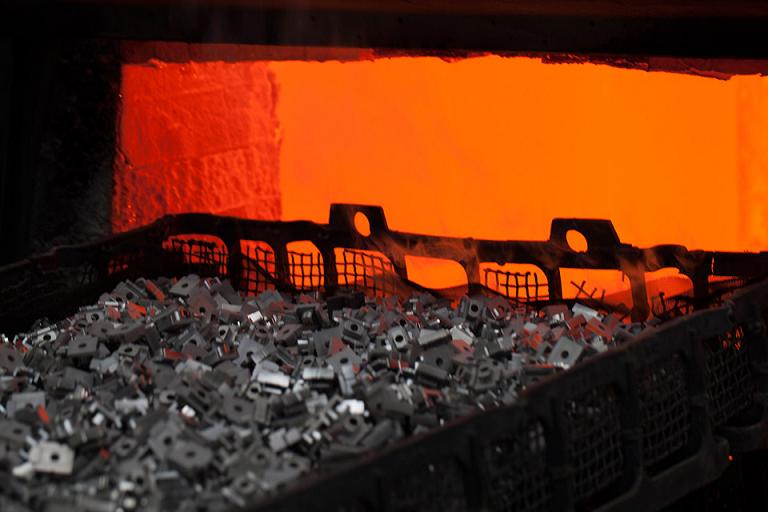Quenching and tempering is a one of the most common heat treatment processes after closed die forging.
Although forging could increase the strength of products, the hardness is still low. To obtain high strength and hardness, heat treatment could be operated after forging. And, quenching and tempering is the most cost effective and convenient method to improve the strength and toughness of steel forgings.
What is Quenchining & Tempering?
Austentizing is the first step to start quenching and tempering . It is the process by heating steel forging blanks above a critical temperature (typically at least 1350 oF) for enough time to transform the microstructure to austenite (a nonmagnetic iron phase). This temperature is held for a predetermined period of time (typically 1 hour per inch of thickness). Once this time has been reached, the forging blanks will be immediately quenched.
Quenching is a process of rapidly cooling steel forgings from the austenitizing temperature. In ferrous alloys (such as alloy steel, carbon steel and some stainless steels), this will often produce a harder metal by transforming the austenite to martensite, while non-ferrous alloys (brass, aluminum, some stainless steels, and superalloys etc.) will usually become softer than normal.
Depending on the alloy and various other factors, cooling may be done with forced air or other gases, (such as nitrogen) or liquids, such as oil, water, and a polymer dissolved in water, or a brine. Each of the different type of cooling media generates different properties and will be selected based on the desired results and type of material being quenched.
The formation of martensite in steel alloys makes a very hard but brittle steel forgings which is too brittle to be ideal for most applications. Tempering is the method for alleviating this problem, which consists of heating to a lower temperature, (often from 400 to 1100 ËšF), to impart some toughness and reduce the hardness. The higher the tempering temperature, the lower the strength and hardness while imparting more toughness.
Why Quenchining & Tempering for Steel Forgings
By tempering and quenching, the steel forgings becomes less brittle and more ductile without sacrificing too much hardness. It is the combination of these two processes that produces a harder, tougher part that’s more weldable and ductile than ordinary carbon steel.
The toughness-factor means greater resistance to wear and abrasion. That is why quenching and tempering is particularly useful in some wear parts where greater abrasion resistance and higher yield strength are necessary, such as mining, quarrying, earthmoving and construction.
CFS Forge could do quenchining and tempering for any steel forged parts. Cost of such heat treatment method is mainly calculated according to the weight of forgings. Flail mover blade and tub grinder teeth usually use quenchining and tempering to improve their strength and wear resistance, thus to improve the serving life of products.
If you have any steel forging project with quenchining and tempering requirement, pls feel free to contact us!


